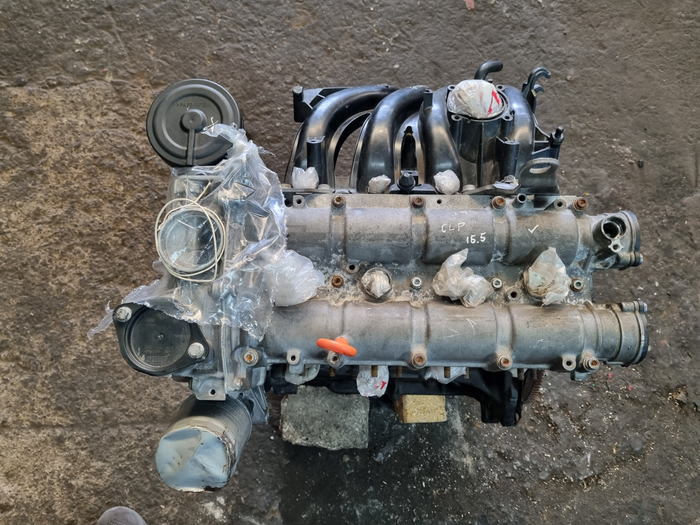Ensure peak performance with a reliable clp engine.
Ensure peak performance with a reliable clp engine.
Blog Article
How a Clp Engine Can Improve Effectiveness in Different Industries
The arrival of CLP engines marks a considerable shift in functional performance across numerous sectors, driven by their capacity to maximize fuel intake and minimize downtime. As organizations progressively prioritize sustainability along with efficiency, the duty of CLP engines ends up being also extra critical.
Introduction of CLP Engines
CLP engines, or Constant Liquid Propellant engines, represent a substantial development in propulsion technology, specifically for area applications. These engines use a continuous feed system that permits the sustained expulsion of propellant, leading to boosted effectiveness and efficiency compared to typical solid or hybrid propulsion systems. By keeping a constant circulation of liquid propellant, CLP engines can accomplish much more precise drive control, which is vital for steering spacecraft in different objective situations.
The design of CLP engines integrates sophisticated products and innovative fuel monitoring systems. clp engine. This leads to decreased weight and enhanced integrity, crucial factors for long-duration room objectives. The continual procedure reduces the risk of burning instability, a typical difficulty in standard rocket engines.

Benefits in Manufacturing
The production of Continual Fluid Propellant (CLP) engines offers a number of notable benefits that improve both efficiency and cost-effectiveness. Among the main advantages is the structured production process, which reduces the intricacy related to typical propulsion systems. By using liquid propellant, suppliers can achieve higher precision in engine efficiency, causing optimized energy outcome and decreased waste.
In addition, CLP engines help with a higher level of modularity, enabling much easier assimilation into different production lines. This flexibility can significantly decrease lead times and boost total operational flexibility. Making use of CLP innovation likewise often tends to decrease the need for extensive maintenance due to fewer relocating components, which equates right into minimized downtime and operational expenses.

Applications in Logistics
Leveraging Continuous Fluid Propellant (CLP) engines in logistics uses significant advantages in operational performance and integrity. These engines provide a durable remedy for various transport demands, allowing the smooth movement of items throughout large ranges. The intrinsic design of CLP engines permits constant power output, which translates right into smoother and more predictable transportation routines.
One of the vital applications of CLP engines in logistics remains in durable products transport, where they can drive both ground and airborne automobiles. find more Their capacity to preserve high efficiency under differing load conditions guarantees that shipment timelines are fulfilled, consequently improving consumer complete satisfaction. Additionally, CLP engines can be incorporated into automated logistics systems, assisting in real-time tracking and enhancing course planning.
Moreover, the toughness of CLP engines reduces upkeep downtime, allowing logistics business to maximize their functional capacities. This is specifically useful in warehousing operations, where effectiveness in managing and transferring goods is critical. As logistics continues to develop, the integration of CLP engines represents a forward-thinking technique that not just boosts performance yet likewise sustains the industry's expanding needs for integrity and rate.
Effect On Energy Effectiveness
How do Continual Fluid Propellant (CLP) engines improve energy performance in transportation? CLP engines make use of a consistent circulation of liquid gas, optimizing combustion processes and preserving a steady thrust output. This style decreases power losses connected with typical burning engines, where fuel delivery can vary and bring about ineffectiveness.
The continual procedure of CLP engines permits a much more effective thermal cycle, causing greater details impulse compared to traditional engines. clp engine. This translates to minimized gas consumption for the same quantity of job done, considerably reducing functional expenses across numerous transportation markets, including aeronautics and maritime markets
Moreover, the ability of CLP engines to preserve optimum efficiency under differing tons conditions lowers the need for frequent velocity and deceleration, better enhancing gas performance. Boosted power performance not just adds to cost savings but also results in lower greenhouse gas emissions, lining up with global sustainability goals.
Future Trends and Innovations
Emerging advancements in Continuous Liquid Propellant (CLP) engine technology assurance to revolutionize the landscape of transport efficiency and sustainability. As markets pivot toward greener options, CLP engines stand at the leading edge, integrating ingenious materials and style techniques that boost efficiency while reducing environmental influence.
Among the most encouraging patterns is the adoption of crossbreed systems that integrate CLP engines with sustainable energy resources. This synergy can optimize gas usage and reduce exhausts, lining up with global sustainability objectives. Furthermore, advancements in computational liquid dynamics (CFD) are assisting in the design of even more aerodynamically effective engines, leading to minimized drag and improved gas effectiveness.
Furthermore, the he has a good point growth of smart tracking systems is set to boost operational effectiveness. These systems leverage information analytics and IoT technology to enhance engine performance in real-time, making sure that the engines run within their most effective parameters.
As research study continues to check Homepage out alternative propellant formulas-- such as biofuels and synthetic gas-- the future of CLP engines looks promising. By taking advantage of these developments, sectors can not only improve their effectiveness however additionally contribute considerably to a cleaner, more lasting future in transportation.
Final Thought
In conclusion, CLP engines represent a significant advancement in performance throughout numerous sectors. The assimilation of advanced products and fewer moving components decreases upkeep needs, while alignment with sustainability objectives positions CLP engines as a critical innovation for the future.
Report this page